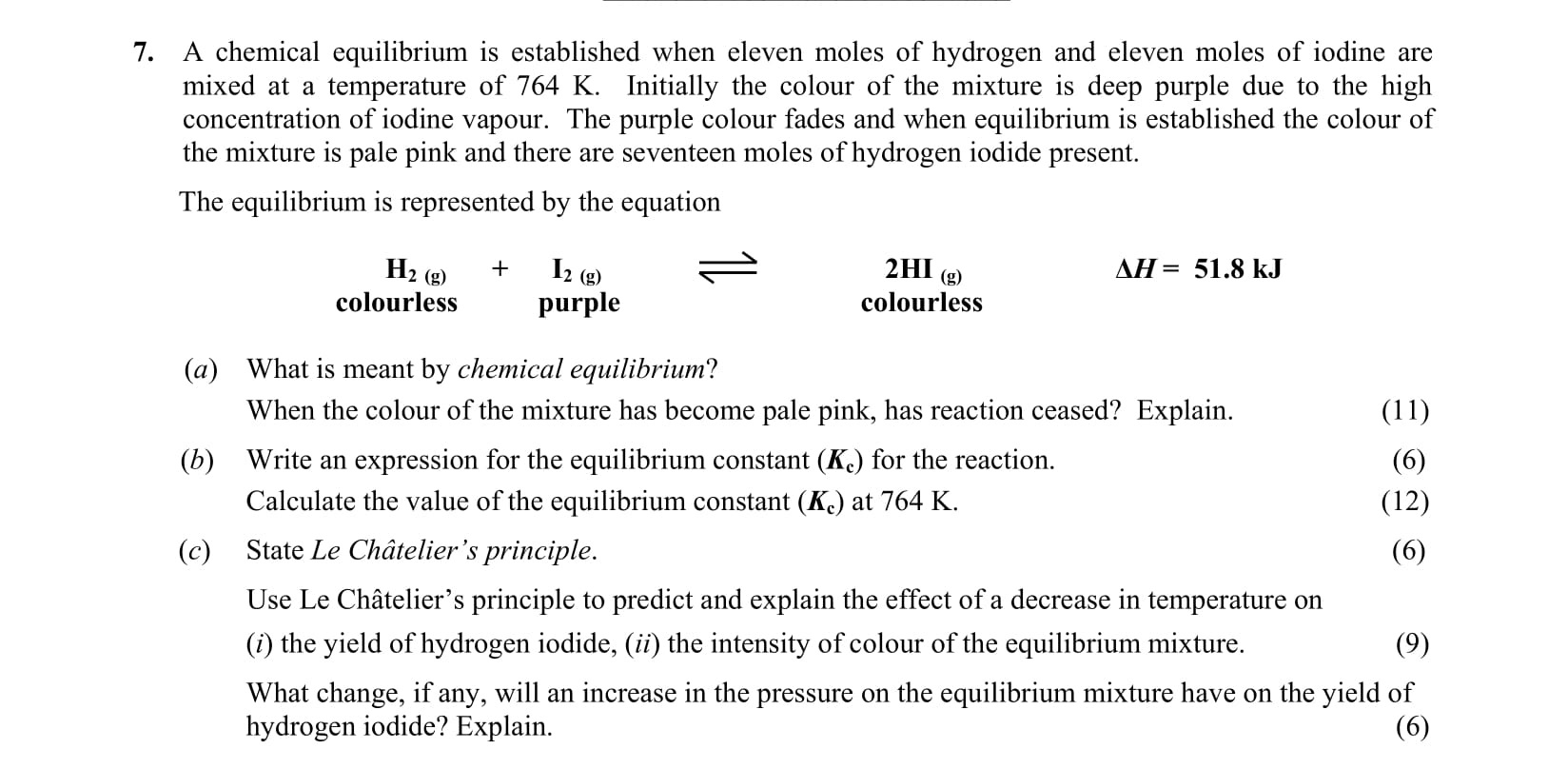Photo AI
A chemical equilibrium is established when eleven moles of hydrogen and eleven moles of iodine are mixed at a temperature of 764 K - Leaving Cert Chemistry - Question 7 - 2008
Question 7

A chemical equilibrium is established when eleven moles of hydrogen and eleven moles of iodine are mixed at a temperature of 764 K. Initially the colour of the mixtu... show full transcript
Worked Solution & Example Answer:A chemical equilibrium is established when eleven moles of hydrogen and eleven moles of iodine are mixed at a temperature of 764 K - Leaving Cert Chemistry - Question 7 - 2008
Step 1
What is meant by chemical equilibrium?
Answer
Chemical equilibrium refers to a state in which the rate of the forward reaction is equal to the rate of the reverse reaction, meaning the concentrations of the reactants and products remain constant over time. This does not imply that the reactions have ceased; rather, they continue to occur at equal rates in both directions.
Step 2
When the colour of the mixture has become pale pink, has reaction ceased? Explain.
Answer
No, when the colour of the mixture transitions to pale pink, the reaction has not ceased. Instead, it indicates that the formation of hydrogen iodide has reached a point where the rates of the forward and reverse reactions are equal. Thus, the concentrations of reactants and products remain constant, maintaining the equilibrium state.
Step 3
Write an expression for the equilibrium constant (Kc) for the reaction.
Answer
The expression for the equilibrium constant (Kc) for the reaction is given by:
where ([\text{HI}]), ([\text{H}_2]), and ([\text{I}_2]) represent the molar concentrations of hydrogen iodide, hydrogen, and iodine, respectively.
Step 4
Calculate the value of the equilibrium constant (Kc) at 764 K.
Answer
To calculate Kc, we can use the provided quantities:
- Total moles of hydrogen: 11 mol
- Total moles of iodine: 11 mol
- Moles of HI at equilibrium: 2x = 17 mol (given)
So, we can substitute the moles into the equilibrium constant expression:
- Moles of H2 left = 11 - x = 11 - 8.5 = 2.5 mol
- Moles of I2 left = 11 - x = 11 - 8.5 = 2.5 mol
- Now using the expression:
4. Given that the total volume is not specified, we can assume unit volume for simplification, yielding:
Thus, the value of Kc at 764 K is approximately 46.24.
Step 5
State Le Chatelier's principle.
Answer
Le Chatelier's principle states that if an external change, such as a change in concentration, temperature, or pressure, is applied to a system at equilibrium, the system will adjust itself to counteract that change and restore a new equilibrium. This means it will shift in a direction that reduces the effect of the disturbance.
